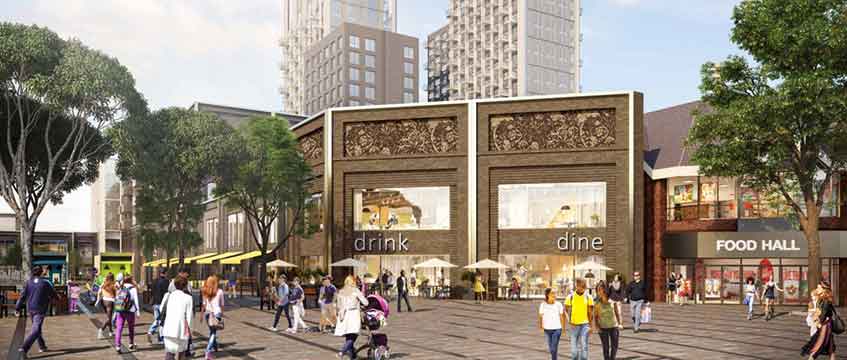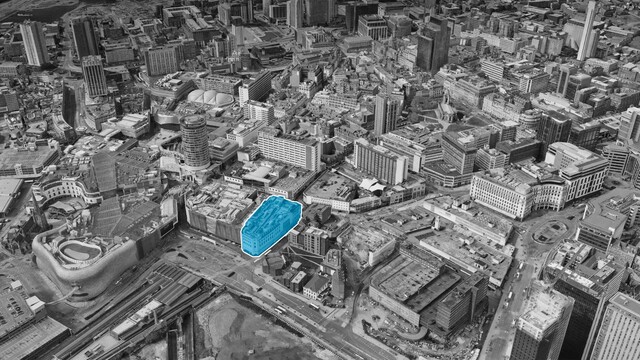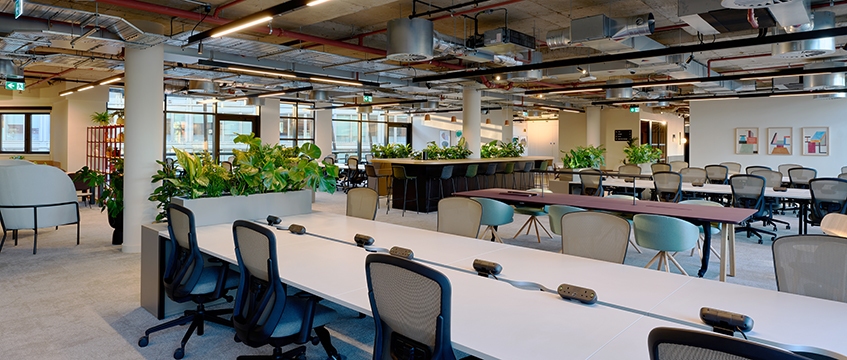The next big thing: shopping centre living
A third of all shopping centres in London now have plans for redevelopment and each of these projects is planning to incorporate a residential element.
Seventeen centres have concrete plans, with four of those looking to double in size in terms of their proposals as investors look to create schemes of critical mass. Another four are currently in the consultation phase, with applications being prepared.
More than 10,000 new homes are now currently proposed across the shopping centre pipeline. The vast majority will be for the build-to-rent market, an emerging asset class across the capital and a tenure that lends itself well to city centre living.
A third of all shopping centres in London now have plans for redevelopment and each of these projects is planning to incorporate a residential element.
Seventeen centres have concrete plans, with four of those looking to double in size in terms of their proposals as investors look to create schemes of critical mass. Another four are currently in the consultation phase, with applications being prepared.
More than 10,000 new homes are now currently proposed across the shopping centre pipeline. The vast majority will be for the build-to-rent market, an emerging asset class across the capital and a tenure that lends itself well to city centre living.
The areas where these redevelopments are taking place are becoming seen as more desirable places to live once again, particularly given the shortage of housing available around the city.
Three of London’s four shopping centre anchors in the south, east and west – Whitgift, Stratford City and White City – have schemes planned that will together total 3,500 flats. (The fourth, Brent Cross, has a further 7,500 homes being built next door as part of a separate development). The smaller schemes including Elephant & Castle, Kingston, Hounslow, and Peckham, which have all seen strong house price growth locally in recent years, will also include substantial residential elements.
Local authorities now depend on their large conurbations to contribute to housing delivery and new workplaces. Shopping centres and their adjacent high streets are often the beating heart of suburban town centres, and in encouraging developers to provide homes, they will create mixed-use communities in a number of locations across the capital. And by providing local jobs and housing, these schemes will relieve authorities of their dependence on a population commuting into and out of its centre each working day on creaking infrastructure. This empowerment of London’s suburbs could transform the capital into a polycentric city, for the greater benefit.
Capital & Regional is to be the next landlord to undertake such an initiative – it will soon submit a major redevelopment plan for its The Mall, Walthamstow, E17. The existing 250,000 sq ft shopping centre will be significantly extended to 340,000 sq ft, along with 470 new homes. Completion of the new shops and restaurants are expected in autumn 2020.
Capital & Regional will seek a development partner to bring forward the residential element, which will be arranged above the retail across four buildings of between three and 29 storeys.
Ken Ford, executive director of Capital & Regional, says: “It wasn’t so long ago that ‘multi-use’ was a dirty word. There is a huge opportunity to reposition many town centre sites, and make them more relevant to how people want to spend their time and money in the 21st century. This means a more diverse retail mix, but also a broader range of uses beyond retail including more restaurants, cinemas, gyms and of course homes.
“Many older shopping centres are simply coming to the end of their economic life cycle, look tired, and need updating. But despite their age, many centres are fundamentally well-built and can be adapted to the changing needs of users”.
Both developers and councils are also seeking increased leisure offerings in order to increase dwell times, enhance areas’ desirability and stave off the threat from online sales.
Shopping Centre
Homes
Kingsland Shopping Centre
448
Vicarage Field
855
Aylesham Shopping Centre
1000
Chrisp Street Shopping Centre
649
Whiteleys Shopping & Leisure Centre
103
Blenheim Centre
527
Westfield Stratford City
1224
Stratford Centre
506
The Leegate Shopping Centre
229
Westfield Croydon – Whitgift
967
Ealing Broadway Centre
55
The Exchange Shopping Mall
500
Westfield London – White City
1347
Eden Walk Shopping Centre
380
The Mall Walthamstow
470
The Arcadia Centre
188
Elephant & Castle Town Centre
979
Oaks Shopping Centre
36
Ford adds, “Rightly, policy is in place across the capital in order to encourage high-density mixed-use town centres, with night-time economies. A challenge when repositioning a town centre site is minimising disruption for the surrounding community. Shopping centres are often in central, well-connected locations, meaning there are likely to be underground railways, major roads and other infrastructure to work around, which can affect costs. However, advanced construction methods are making this type of project viable.”
Along with the fact that city centres are now a desirable place to live, with planning policy geared to increasing density and creating mixed-use communities, it would seem there is now a perfect storm driving residential-orientated shopping centre redevelopment, with many long-term retail investors looking towards the next cycle.
To send feedback e-mail paul.wellman@egi.co.uk or tweet @paulwellman eg or @estatesgazette











